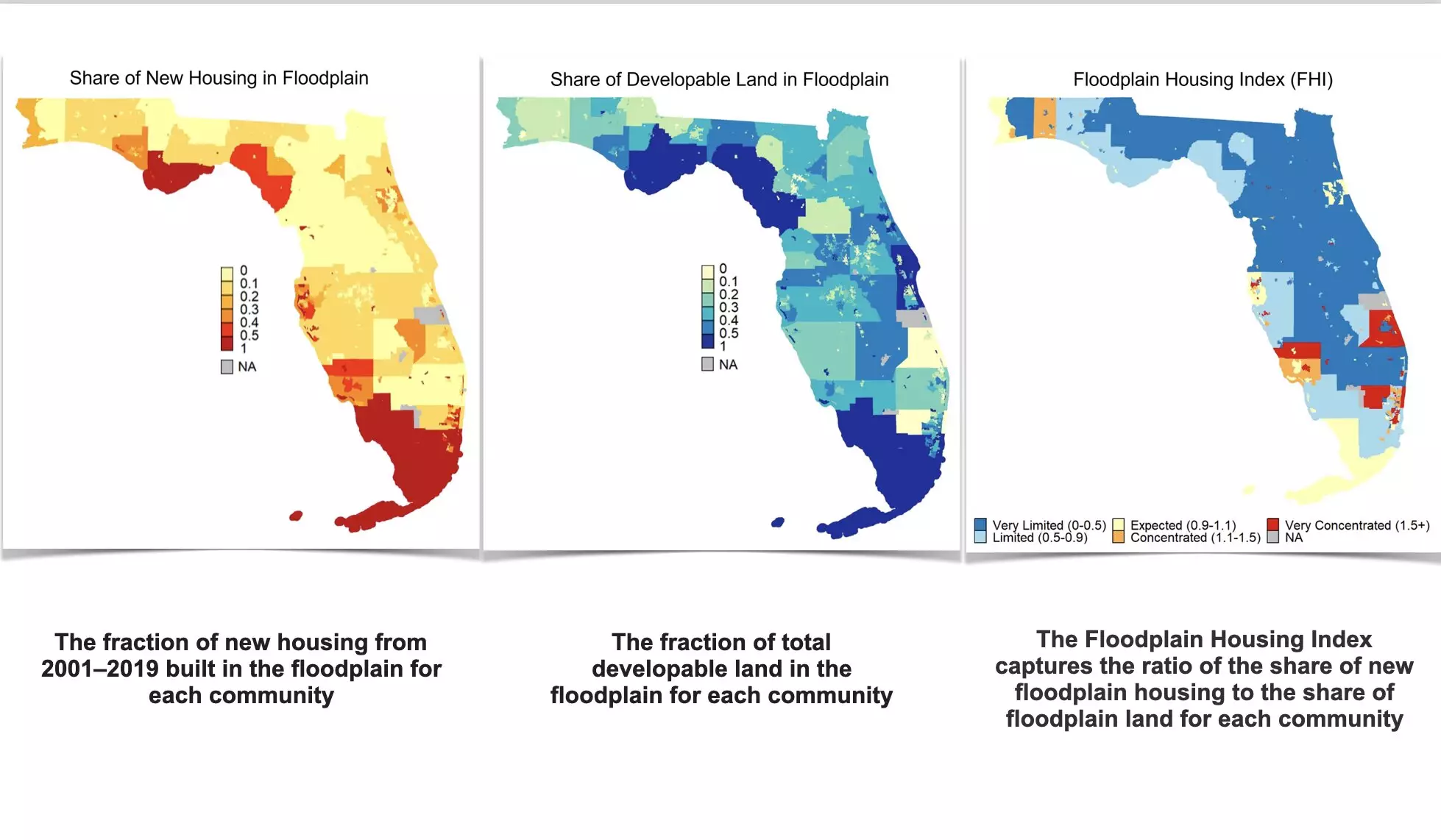In the United States, the last twenty years have witnessed a significant transformation of floodplain landscapes, with over two million acres developed for housing. This alarming trend raises crucial questions about the future safety of many communities, particularly given the increasing frequency and intensity of natural disasters. Researchers from the University of Miami’s Rosenstiel School of Marine, Atmospheric, and Earth Science unveiled a comprehensive analysis revealing that nearly half of all new floodplain housing construction has occurred in Florida. The implications of such a concentrated development strategy necessitate a detailed examination of the broader context of floodplain management and urban planning.
The study, published in the journal Earth’s Future, meticulously combined geospatial data on land use, impervious surface areas, housing statistics, and digitized floodplain regulatory maps to paint a clearer picture of floodplain development across the nation. Their findings indicated that around 840,000 new residential structures were established in flood-prone areas, with Florida accounting for a staggering 398,000, or 21% of all new housing built within the state. This figure is particularly noteworthy as it outstrips all other states, highlighting Florida’s vulnerability and the urgency with which floodplain management must be addressed.
Despite the substantial number of new developments, the researchers revealed a discrepancy in expectations regarding the distribution of housing. Lead author Armen Agopian noted that if housing were assigned proportionately according to the floodplain acreage, the figures would suggest that approximately 40% of new housing should be constructed within these vulnerable zones. Instead, just a fraction has materialized, raising concerns about the effectiveness of local regulations in curbing floodplain development.
Interestingly, the study found that nearly 74% of U.S. communities have enforced limitations on new development in floodplains. However, only 87% have enacted regulations specifically targeting new housing within these flood-prone areas. This suggests a paradox where while regulatory frameworks exist, their implementation may not always align with intended outcomes, potentially exposing communities to increased risks.
Another significant finding of the study is the behavioral discrepancy in floodplain development between coastal and inland communities. It appears that coastal areas exhibit higher rates of floodplain development due to their geographic and economic circumstances. As populations continue to gravitate towards coastlines for their aesthetic value and economic opportunities, the propensity to build in high-risk areas becomes a pressing concern.
Moreover, the research highlighted a correlation between participation in FEMA’s Community Rating System (CRS) and floodplain development. Communities that engaged in this voluntary program—designed to reward proactive flood management with reduced insurance rates—were more likely to allow floodplain development. However, as Agopian points out, mere participation is insufficient. Communities must also adopt more robust floodplain management practices to mitigate risks effectively.
The consequences of unchecked development in flood-prone areas extend beyond immediate geographical concerns. Increased construction in these regions often results in greater damage during flood events, raising not only economic but also humanitarian concerns. The study serves as a stark reminder that while many areas have been slow to develop floodplains, others are not afforded the same luxury and require urgent intervention to combat future flood disasters.
The researchers emphasized that early and proactive measures taken by many communities serve as a blueprint for resilience and sustainability. According to senior author Katharine Mach, communities that have successfully avoided the pitfalls of floodplain development provide valuable lessons on the interplay between smart policy and effective urban planning.
The findings from this groundbreaking analysis prompt vital discussions about the role of policy, community engagement, and proactive measures in floodplain development. To mitigate future risks, stakeholders must prioritize an integrative approach that balances the substantial benefits of housing development with the crucial need for environmental and public safety in flood-prone areas. The path forward necessitates collaboration, transparency, and a commitment to long-term planning to safeguard communities now and in the future.


Leave a Reply